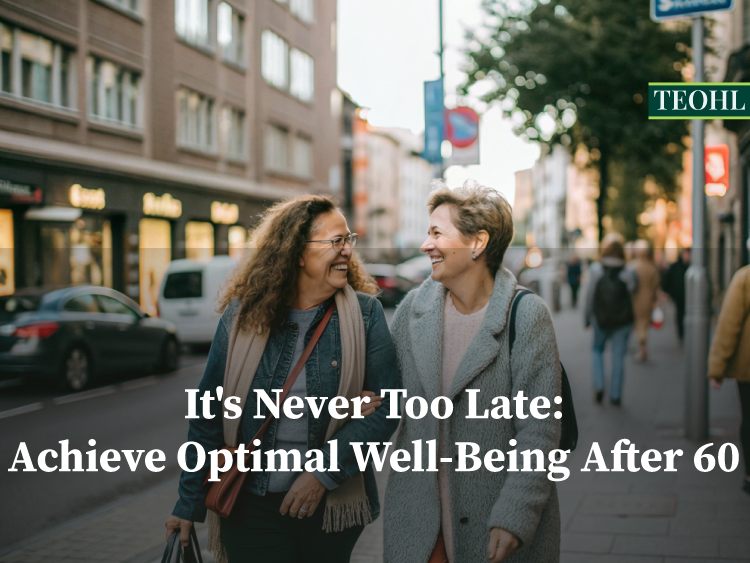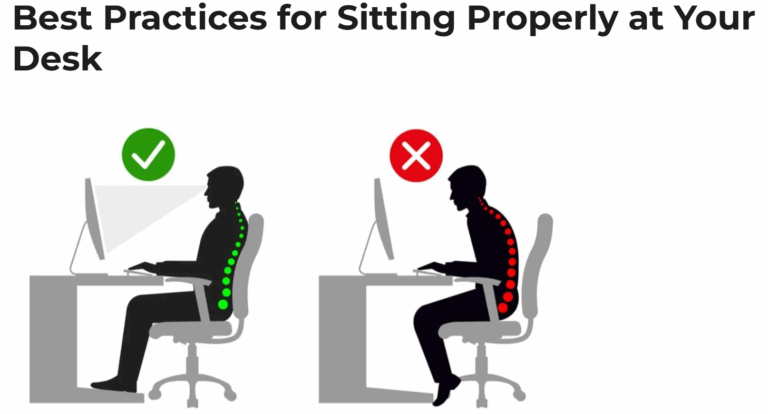It’s Never Too Late: Your Complete Guide to Thriving After 60

Achieving optimal well-being after 60 isn’t just possible—it’s backed by science. A groundbreaking study shows that one in four older adults successfully restored their health within three years.
If you’ve been told that declining health is inevitable as you age, recent research about optimal well-being after 60 has encouraging news. A study published in PLOS One followed over 8,000 older adults in Canada and discovered something remarkable: people who weren’t thriving at the study’s start were able to achieve optimal well-being after 60 within just three years through specific lifestyle changes.
This challenges everything we thought we knew about aging. Your best years don’t have to be behind you, and the path to optimal well-being after 60 is clearer than ever before.
For those interested in holistic approaches to healthy aging, this research provides a science-backed roadmap for transformation.
Understanding Optimal Well-Being After 60: The Six Essential Pillars
Before diving into solutions, let’s define what researchers mean by optimal well-being after 60. According to Dr. Mabel Ho’s research team at the University of Toronto, it encompasses six interconnected elements:
The Six Pillars:
Strong social support networks that provide emotional connection and practical help. Positive perceptions about aging rather than accepting decline as inevitable. Good physical health with manageable chronic conditions. Solid mental and emotional health including resilience and coping skills. General happiness and life satisfaction in daily experiences. The ability to perform daily activities without severe limitations.
Understanding these pillars reveals why traditional advice focusing solely on diet and exercise falls short for achieving optimal well-being after 60. While physical health matters enormously, true wellness requires addressing your mind, emotions, and relationships simultaneously.
According to recent statistics, more than one in five Americans will be 65 or older by 2040. In 2023, about 93% of adults age 65 or older reported having at least one chronic disease. However, research shows that many chronic conditions can be prevented through the same lifestyle modifications that support optimal well-being after 60.
Why Mental Health Comes First on the Path to Optimal Well-Being After 60
Here’s the most important finding from the research on optimal well-being after 60: individuals who began with strong psychological and emotional well-being were nearly five times more likely to achieve optimal overall health by the study’s end.
Think about that. Your mental state isn’t just one component of optimal well-being after 60—it’s the foundation everything else builds upon.
“One of the things I always say to my patients is, believe it or not, there’s no disease, dis-ease or lack of ease, without your mind,” explains Dr. Andrew Freeman, director of cardiovascular prevention and wellness at National Jewish Health. “The mind-body connection is unbelievably underestimated by Western medicine.”
The Loneliness Crisis That Threatens Wellness
The data on social isolation is alarming. Chronically lonely adults age 50 and older have a 56% higher risk of stroke compared to those with strong social connections. Furthermore, experiencing social isolation or loneliness is associated with significantly higher risk of early death.
Conversely, stress reduction and frequent socialization were associated with improved cognition in adults experiencing early-stage Alzheimer’s disease—both crucial factors in maintaining optimal well-being after 60.
For more strategies on building meaningful relationships at any age, explore our comprehensive guide.
The Three Physical Foundations of Optimal Well-Being After 60
While mental health comes first, physical health provides the platform for everything else when working toward optimal well-being after 60. Let’s break down exactly what works.
Exercise: A Critical Component
The research emphasizes regular physical activity as essential for optimal well-being after 60, but what does that actually look like?
Strength Training (2-3 times per week): Contrary to popular belief, older adults need resistance training even more than cardio. Muscle mass naturally declines with age—a condition called sarcopenia—but strength training reverses this process. You don’t need a gym membership; bodyweight exercises, resistance bands, or light dumbbells work excellently.
Start with: wall push-ups, chair squats, resistance band rows, leg raises while holding a countertop, and seated overhead presses with light weights.
Cardiovascular Activity (150 minutes weekly): This doesn’t mean running marathons. Research shows that fast walking is a key to longevity. The goal is elevating your heart rate moderately for sustained periods.
Dr. Joyce Oen-Hsiao, a cardiologist at Yale Medicine, offers practical advice: “A lot of my elderly patients, their outing is going to the store. So I’ll say, well, don’t park at the parking spot that’s close—maybe park at the parking spot that’s a little bit further. And then that way you increase your steps, you get a little bit more mobile.”
Balance and Flexibility (Daily): Falls are a leading cause of injury in older adults. Simple balance exercises—standing on one foot while brushing teeth, heel-to-toe walking, or gentle yoga—dramatically reduce fall risk.
For detailed exercise routines designed specifically for seniors maintaining strength and mobility, check our fitness guide.
Nutrition That Supports Vibrant Health
The study mentions “healthy eating” but what does that mean specifically for achieving optimal well-being after 60?
Protein Priority: Older adults need more protein than younger people—roughly 1.0 to 1.2 grams per kilogram of body weight daily. Protein preserves muscle mass, supports immune function, and aids recovery.
Best sources: lean meats, fish, eggs, Greek yogurt, cottage cheese, legumes, and for vegetarians, tofu and tempeh.
Anti-Inflammatory Focus: Chronic inflammation underlies most age-related diseases. An anti-inflammatory diet emphasizes: colorful vegetables and fruits, fatty fish rich in omega-3s, olive oil, nuts and seeds, whole grains, herbs and spices like turmeric and ginger.
Hydration Matters More: Older adults have a diminished thirst response, making dehydration common. Aim for 6-8 glasses of water daily, more if exercising or in hot weather.
Limit These: Excessive sodium contributes to high blood pressure, ultra-processed foods increase inflammation, added sugars spike blood glucose, and excessive alcohol impairs sleep and cognition.
Supplements to Consider: After consulting with your doctor, consider vitamin D (most older adults are deficient), vitamin B12 (absorption decreases with age), calcium for bone health, and omega-3 fatty acids if not eating fish regularly.
Sleep: Essential for Health and Vitality
The study acknowledges sleep’s crucial role in optimal well-being after 60 but offers no practical solutions. Let’s fix that.
How Much Sleep Do You Actually Need? Adults over 60 need 7-9 hours nightly. Despite popular belief, older adults don’t need less sleep—they simply have more difficulty getting it.
Common Sleep Disruptors: Medications that interfere with sleep, chronic pain conditions, frequent urination (nocturia), sleep apnea (often undiagnosed), anxiety and depression, and irregular sleep schedules.
Practical Sleep Solutions:
Maintain consistent bed and wake times, even on weekends. Create a wind-down routine 60 minutes before bed—no screens, dim lights, calming activities. Keep your bedroom cool (65-68°F optimal), dark, and quiet. Limit fluids two hours before bed to reduce nighttime bathroom trips. Avoid caffeine after 2 PM. Get morning sunlight exposure to regulate circadian rhythm. Consider a white noise machine if environmental noise is problematic.
If you’re struggling with sleep issues, consult your doctor about potential sleep apnea or other disorders. For comprehensive strategies on improving sleep quality at any age, visit our sleep resource center.
Building Social Connections: A Key Pillar of Wellness
The research is unequivocal: supportive relationships are critical for optimal well-being after 60. Yet this is where many older adults struggle most, especially after retirement, relocation, or losing a spouse.
Why Relationships Matter for Health
Beyond reducing stroke risk and improving cognition, strong social ties provide: emotional support during difficult times, practical help with daily tasks, sense of purpose and meaning, accountability for healthy behaviors, cognitive stimulation through conversation, and reduced depression and anxiety.
Practical Ways to Build Connections
Join Purpose-Driven Groups: Look for volunteer opportunities at local nonprofits, religious or spiritual communities if that aligns with your values, senior centers offering classes and activities, hobby clubs (gardening, book clubs, bird watching), and fitness classes specifically for older adults.
Leverage Technology: Video calls with distant family and friends, online communities around your interests, social media to stay connected (when used mindfully), and apps designed to connect people with similar interests locally.
Intergenerational Connections: Programs pairing seniors with young people, tutoring or mentoring opportunities, attending grandchildren’s activities when possible, and joining community events that attract all ages.
Be Intentional About Quality: One deep friendship provides more benefit than a dozen superficial acquaintances. Focus on relationships that energize rather than drain you. Regular contact matters—weekly or more frequent interaction sustains connection.
For detailed guidance on overcoming loneliness and building community, explore our social wellness section.
Managing Stress and Cultivating Positive Mindset
The study found that positive perceptions of aging significantly predicted optimal well-being after 60. Your beliefs about aging literally shape your health outcomes.
Reframing Your Aging Narrative
Instead of “I’m too old for that,” try “I’m experienced enough to approach this wisely.” Replace “My body is breaking down” with “My body needs different care now.” Change “My best years are behind me” to “I’m entering a new chapter with unique opportunities.”
Research shows that people with positive attitudes about aging live an average of 7.5 years longer than those with negative views.
Evidence-Based Stress Management Techniques
Mindfulness Meditation: Just 10-15 minutes daily reduces cortisol, improves emotional regulation, and enhances cognitive function. Apps like Headspace or Calm offer senior-friendly guided sessions.
Deep Breathing Exercises: Box breathing (inhale 4 counts, hold 4, exhale 4, hold 4) activates your parasympathetic nervous system, lowering heart rate and blood pressure immediately.
Progressive Muscle Relaxation: Systematically tensing and releasing muscle groups reduces physical tension and anxiety. Particularly helpful before bed.
Journaling: Writing about gratitude, worries, or daily experiences provides emotional release and perspective. Research shows gratitude journaling specifically improves well-being.
Nature Exposure: Spending time outdoors, even briefly, reduces stress hormones and improves mood. Aim for at least 20 minutes daily.
For more techniques on managing stress naturally, visit our mental wellness hub.
The Role of Purpose in Thriving
The ability to carry out daily activities without severe limitations is one pillar of optimal well-being after 60, but purpose goes deeper. What gets you out of bed in the morning?
Finding Meaning in This Life Stage
Volunteer Work: Contributing to causes you care about provides structure, social connection, and satisfaction. Look for opportunities at schools, hospitals, food banks, animal shelters, or environmental organizations.
Part-Time Work or Consulting: Many retirees find fulfillment in part-time work that leverages their expertise without full-time stress. Consider consulting in your former field or exploring entirely new areas.
Creative Pursuits: Learning a musical instrument, painting, writing, woodworking, or any creative endeavor provides both cognitive stimulation and emotional expression. You don’t need to be “good” at it—the process itself provides benefits.
Lifelong Learning: Community colleges offer senior-friendly courses, online learning platforms provide endless options, and local libraries host lectures and discussion groups. Learning new skills builds cognitive reserve.
Caring for Others: Whether babysitting grandchildren, pet fostering, or checking on elderly neighbors, caregiving (in appropriate doses) provides purpose and connection.
Understanding the Three-Year Timeline to Transformation
One of the study’s most hopeful findings about optimal well-being after 60 is that meaningful change happened within just three years for many participants. What does this timeline mean for you?
Year One: Foundation Building
During your first year, focus on establishing consistent habits rather than dramatic results. Small, sustainable changes compound over time. This is when you: begin regular exercise routines, improve sleep hygiene, expand social connections, address obvious health issues, and start mental health practices.
Don’t expect to feel dramatically different immediately. You’re laying groundwork.
Year Two: Integration and Adjustment
By year two, new habits become more automatic. You’ll likely notice: increased energy and stamina, improved sleep quality, stronger relationships, better stress management, and clearer thinking.
This is also when you identify what’s working and what needs adjustment. Not every strategy suits everyone.
Year Three: Consolidation and Results
Year three is when the compound effects become obvious. Many study participants achieved optimal well-being after 60 during this period. You might experience: significant improvement in chronic condition management, noticeable physical capability gains, robust social support networks, consistent positive mood, and renewed sense of purpose.
Creating Your Personal Action Plan
Generic advice helps no one. Here’s how to create a personalized strategy for achieving optimal well-being after 60.
Step 1: Assess Your Starting Point
Honestly evaluate each pillar of wellness. Rate yourself 1-10 on: social connections and support, perceptions about aging, physical health, mental and emotional health, happiness and life satisfaction, and ability to perform daily activities.
Your lowest scores indicate where to focus first.
Step 2: Identify One Change Per Area
Don’t try changing everything simultaneously. Choose one manageable action for each domain. For example: Social—join one club or group, Mindset—daily gratitude journaling, Physical—three 30-minute walks weekly, Mental—try meditation app for 10 minutes daily, Purpose—volunteer twice monthly, Sleep—establish consistent bedtime routine.
Step 3: Implement Gradually
Add one new habit every two weeks. This prevents overwhelm and allows each practice to take root before adding more. Track your efforts in a simple journal or calendar. Consistency matters more than perfection.
Step 4: Evaluate and Adjust
Reassess your scores after four months. What’s improved? What hasn’t changed? Which practices have become habits? Which feel unsustainable? Modify your approach based on what you’ve learned.
For a printable worksheet to help create your personalized wellness action plan, download our free resource.
When Professional Help Is Needed
While lifestyle changes are powerful for achieving optimal well-being after 60, they don’t replace medical care. Consult healthcare providers if you experience: persistent depression or anxiety lasting more than two weeks, significant sleep disturbances despite good sleep hygiene, unexplained pain or physical symptoms, difficulty with daily activities due to physical limitations, memory problems that interfere with function, social withdrawal despite efforts to connect, or thoughts of self-harm.
These situations require professional evaluation and treatment. Lifestyle modifications complement but don’t replace appropriate medical care.
For guidance on finding mental health support for older adults, visit our resource center.
The Bottom Line: Achieving Optimal Well-Being After 60 Is Possible
The Canadian study offers something rare in aging research: genuine hope backed by solid evidence. One in four older adults who weren’t thriving managed to achieve optimal well-being after 60 within three years through supportive relationships, healthy lifestyle choices, and positive mindset.
This research isn’t about denying the realities of aging or pretending that 70 is the new 40. It’s about recognizing that decline isn’t inevitable, and that the path to optimal well-being after 60 is achievable through consistent, holistic effort.
The holistic approach matters most. Physical health, mental well-being, social connection, and sense of purpose are interconnected. Improving one area supports the others, creating an upward spiral of wellness.
Start where you are. Use what you have. Do what you can. Small, consistent actions compound into remarkable changes over time.
Your age gives you advantages younger people don’t have—wisdom, perspective, self-knowledge, and often more time and autonomy. Use these advantages to create the healthiest, most fulfilling chapter of your life yet.




